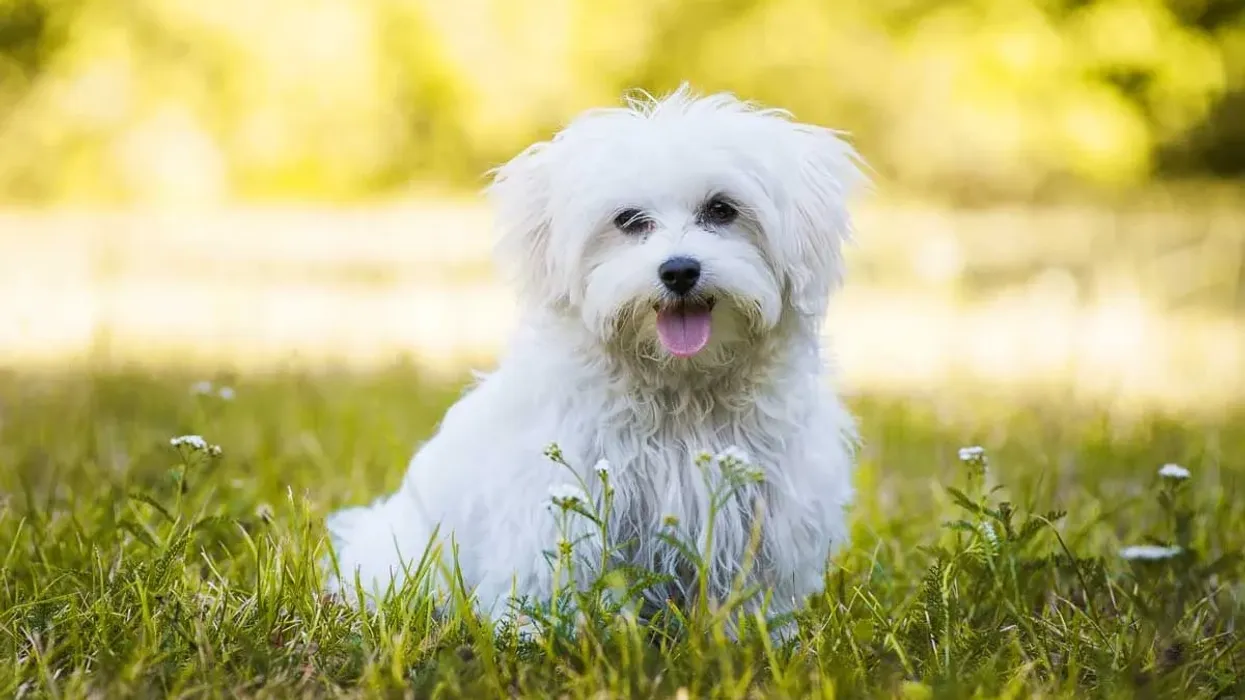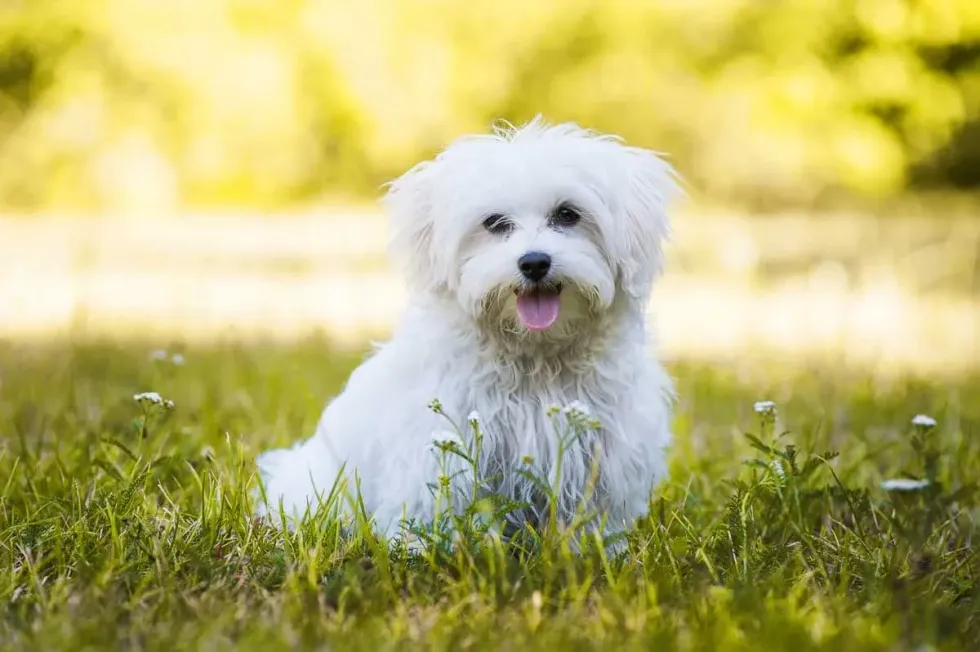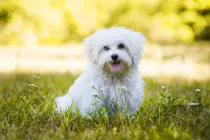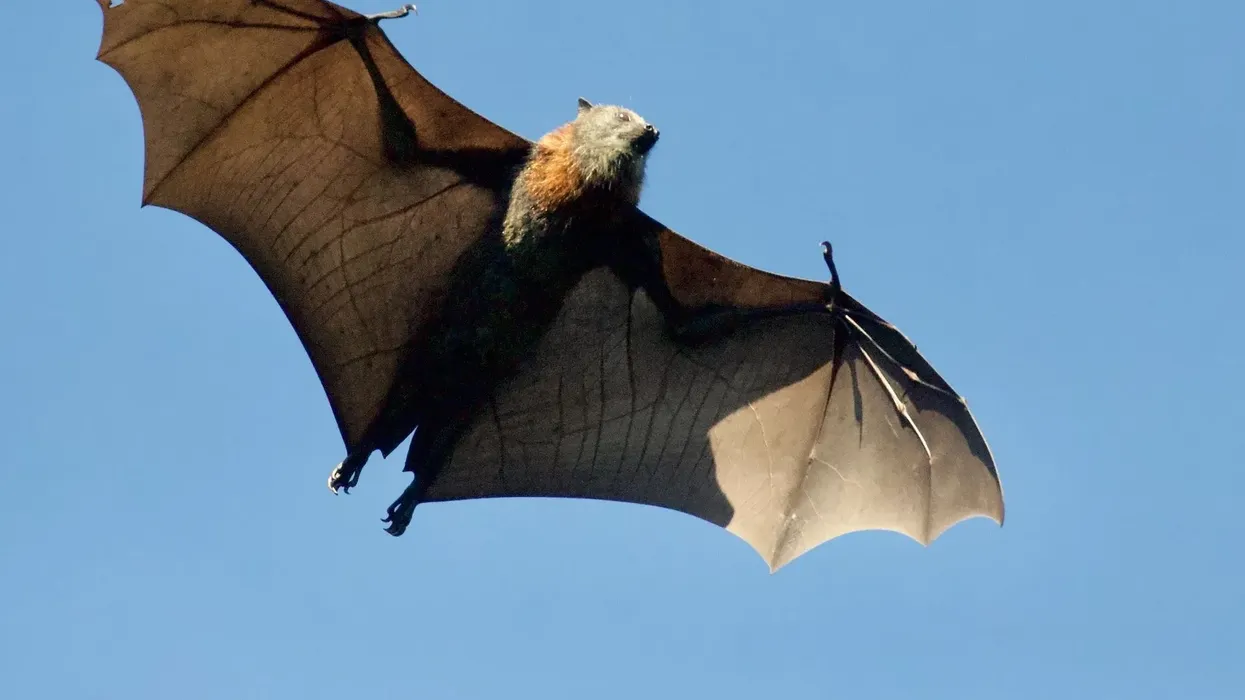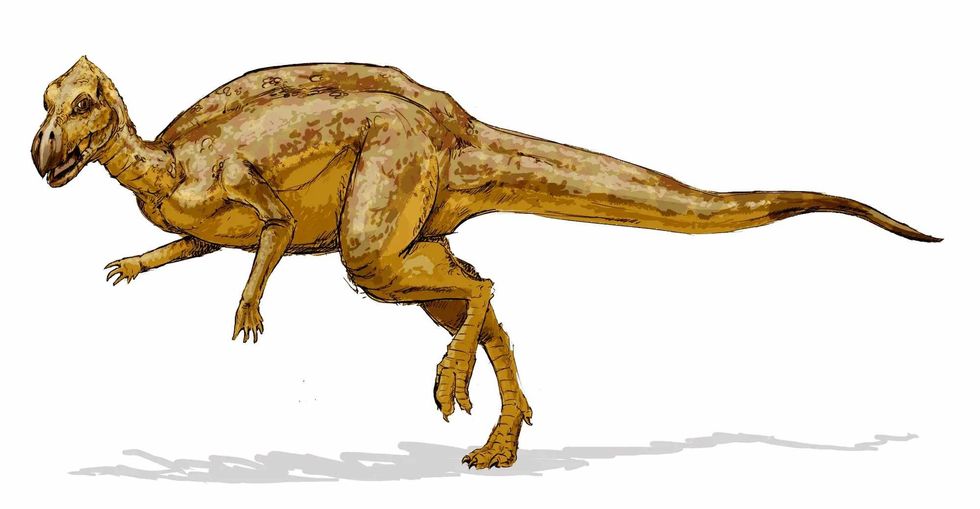Fun Maltese Facts For Kids

Content
- What type of animal is Maltese?
- What class of animal does a Maltese belong to?
- How many Maltese are there in the world?
- Where do Maltese dogs live?
- What is a Maltese's habitat?
- Who do Malteses live with?
- How long does a Maltese live?
- How do they reproduce?
- What is their conservation status?
- What do Malteses look like?
- How cute are they?
- How do they communicate?
- How big is a Maltese?
- How fast can Malteses run?
- How much does a Maltese weigh?
- What are the male and female names of the species?
- What would you call a baby Maltese?
- What do they eat?
- Are they dangerous?
- Would they make a good pet?
- Are they slobbery?
- Are they hypoallergenic?
- Did you know...
- The Malteses call
- Where does the Maltese originate from?
Maltese dogs are purebred with a rich lineage and have been quoted in the works of many eminent philosophers such as Strabo and Aristotle. In 1888 the American Kennel Club officially approved this dog breed.
Malteses are a toy dog recognized for their deluxe white coat which covers their entire body. They can be an incredible companion and are ideal for dog shows. Maltese dogs go by a myriad of denominations such as Roman ladies dog, Maltese terrier and Maltese lion dog.
This breed has been around for over 2,800 years and are considered as one of the ancient dog breeds. They were later bred with other breeds of dogs and mixed breeds evolved.
Malteses have always been in the limelight as they were favorite of Elizabeth Taylor and Marie Antoinette. Malteses are said to have originated in the southern-central part of Europe.
However, there are several ideas related to their origin and it still remains unspecified. They are named after the archipelago Malta, which is situated between the northern African shore and Sicily.
Some theories suggest that they may have hailed from this region because of the namesake. The second theory suggests that these dogs are from Asian territory, while some believe that they were discovered in Italy.
Hence, their genesis is undecided. However, during the 15th century, these dogs became very notable and were considered as a sign of sophistication.
However, dog breeds such as Havanese, Bichon Frise, and Bichon Bolognese are also linked with this breed. Other mixed dog breeds may include Maltipoo, Malshi and Malchi.
Malteses were introduced in the United States towards the end of 1800 and were acknowledged in 1880. Despite this, their popularity in the U.S was trivial until 1950 and after that, the dog breed became prominent across the world.
Maltese dog breeds have always been an opulent breed since their discovery, and they are individualized for their long silky white coat and cheerful temperament. Their thick coat does not have an undercoat which means they require regular brushing to avoid the coat from becoming matted.
They have a height of approximately 8-10 in (21-25 cm). Maltese dogs are remarkably resilient, therefore they are apartment-friendly as they do not require masses amount of space to run around.
They genuinely rejoice in the company of people and develop no issue living with other pets.
However, socializing them at an early age is necessary because their temperament can change. They can be stubborn at times, especially while training, but they do respond promptly if their training involves treats.
If you are eager for more facts about Maltese dogs then keep reading this article, and if you enjoyed it then please check out these other articles on labrador retriever and American pit bull terrier.
Maltese Interesting Facts
What type of animal is Maltese?
Malteses are a breed of dog. They are even considered to be one of the ancient dogs of Europe.
What class of animal does a Maltese belong to?
These dogs belong to the class of mammals.
How many Maltese are there in the world?
Maltese dogs possess a lengthy history. From their discovery until modern times they have been through a lot of phases.
They hold an important position among some of the major civilizations and societies. They were a part of the Mediterranean civilization and the Egyptian civilization.
Malteses were found during the 15th and 16th century, but these small dogs became vulnerable during the 17th and 18th centuries as their population depleted gradually.
However, their population was later restored by the attempts made by dog enthusiasts. Apart from some European countries, their popularity and numbers increased in the U.S after 1950 and presently they are found all over the world.
Despite this, the exact number of Maltese dogs are unspecified. This dog breed has been crossed with other dog breeds such as Chihuahuas, Yorkshire Terriers, Shi-Tzus, Poodles, Beagles, Bichons, Pugs and Pomeranians to create breeds that are known as Mal-Chis, Morkies, Mal-Shis, Maltipoos, Malteagles, Maltichons, Maltipugs, and Maltipoms respectively.
Where do Maltese dogs live?
Malteses were found in Europe, and after the late 19th century they were found in North America. Nowadays they are found globally.
What is a Maltese's habitat?
Maltese dog breeds are the perfect home pets, these small dogs can even adjust to small spaces such as apartments. They do not require a massive lawn or garden to run around and play as they have moderate energy levels. They also cherish being around their family and loved ones.
Who do Malteses live with?
Maltese dogs have an amiable personality and prefer to live with people. They are very affectionate and loyal towards their family.
Socializing them during their preliminary years is very important otherwise this dog can become anxious around people or other dogs. They do not cause any harm to other pets, and they are entirely reassured around other dogs or pets of any kind.
They share a very strong bond with their family and are always ready to protect them.
This dog is apartment-friendly, as they are a toy breed and their size is very small. This is especially true when they are a puppy.
Due to the puppies small size they are at risk of being harmed, thus children below eight years of age should not be left alone with this dog breed. If you are planning to bring Maltese dogs home with a toddler around, keep them under proper supervision.
How long does a Maltese live?
The approximate life span of a Maltese is between 12 to 15 years. Several factors may influence the life span of these dogs, such as genetic health problems and general health issues.
Like every other dog breed, Malteses are prone to certain health problems which are either inherited or may occur with age.
Undoubtedly they make a great pet and taking proper care of them is equally essential.
The health problems which are inherited by them may include liver disorder, cardiovascular complications, eye disorder, knee joint disorder and dental disorders.
These are some of the health issues which may affect their life span, therefore it is advised to adopt or get them from a reputable and well-known breeder so that you have an idea of their medical history and what kind of diseases they might be prone to.
How do they reproduce?
The process of reproduction of Maltese dogs is called mating and the average period of gestation is around 60 to 64 days. Female Malteses will give birth to between three to eight puppies. Malteses have been crossed with various dog breeds, especially in an attempt to save their population.
What is their conservation status?
Maltese dogs were at the edge of Extinction during the 18th century, but now their population has been restored and their conservation status is officially Least Concern.
Maltese Fun Facts
What do Malteses look like?
Maltese dogs and puppies are frequently confused with other breeds because of their uncanny resemblance, but many noteworthy characteristics can only be observed in this breed. Even as a puppy they have definite features like their drop ears and silky coat.
They also have quite a joyful temperament. These dogs have brown eyes, and their eyes are encompassed with a darker skin tone or halo, while their nose is small and black.
The black color of their noses may become discolored because of less sun exposure, which is a phenomenon called winter nose. Malteses are also known as Maltese lion dogs.
Their pure white, long hair makes their appearance even more royal, but to maintain this they need frequent grooming and daily brushing. Malteses have glossy coats without any undercoat and their coat is devoid of any curve.
They also don't shed too much, which makes them a hypoallergenic breed. Maltese dog breeds have a well-proportioned body which is evident from the fact that the length from the base of their tail to their shoulder is equivalent to the length from their shoulder to the ground level.
Their head is slightly rounded and their ears are dropped, although they are often covered under their long hair.
Some owners like to keep their hair trimmed so that their ears are visible. They also have an extended tail which is often curved.
Maltese mix-breeds may have different personalities and looks depending on the other parent breed. Maltipoos, which are a crossbreed of Malteses and Poodles, have curly hair.
They also come in various shades such as black, cream, gray and white. Mal-Shi, a cross between Maltese and Shi Tzu, are small dogs with a glossy, lustrous, wavy coat.
This coat also comes in varied colors such as brown, black and white. They can be solid in color, or combinations of two colors.
Third on the list is Mal-chis, a cross between Malteses and Chihuahuas, these dogs may or may not have a long coat but the most striking similarity between these dogs and Malteses is their long and droopy ears.
Breeds such as Yorkshire Terriers are often crossed with Malteses to get Morkies or Morkshire Terriers. These dogs are around 7-10 lb (3-4.5 kg) but their coat is not as long as Malteses.
The coat colors may be solid or a combination of other colors including tan, white, light yellowish-orange or black. Their muzzle has to be of adequate length and their eyes are dark.

How cute are they?
These small dogs are extremely cute.
How do they communicate?
Malteses, like most other dogs, bark to communicate. They may bark to express their awareness, curiosity, or anxiousness.
They can also bark if they are suspicious of someones behaviour, as they are very protective of their family. Malteses use different methods when communicating with dogs than how they communicate with people.
They may circle each other, sniff, bark or howl to communicate with other dogs. When it comes to people, they make use of body language along with vocalizations. For example, when they hold their tail up this may signify that Malteses want to establish their authority.
If their tail is tucked it may signify that the situation is terrifying, whereas wagging or wiggling may refer to a happy mood while growling and displaying of teeth can express aggression. If a Maltese is left alone for too long they may develop separation anxiety which often leads to howling.
How big is a Maltese?
Malteses are a breed of small dog. As they weigh below 7 lb (3 kg) they fall under the toy breed group. The average height of a Maltese dog is approximately 8-10 in (21-25 cm) and the total body mass is around 3-7 lb (1.3-3.1 kg) which makes them almost the size of a Yorkshire Terrier dog.
How fast can Malteses run?
The speed of a Maltese dog has not been accurately estimated.
How much does a Maltese weigh?
Maltese dogs weigh around 3-7 lb (1.3-3.1 kg) when they grow up, but sometimes the weight depends on their age as well as on their activity and metabolism. A healthy Maltese dog is never over 7 lb (3 kg), and this is why they are categorized under the toy group.
This breed is prone to obesity as they gain weight quickly hence moderate exercise should be a part of their routine.
What are the male and female names of the species?
The male is called a dog and the female is called a bitch.
What would you call a baby Maltese?
A baby Maltese is known as a Maltese puppy. They are extremely vulnerable when they are young, and they require more care and affection than an adult dog. When planning to get a Maltese puppy as a pet, make sure to check the medical history of both the parent dogs for any underlying or undiagnosed health conditions.
What do they eat?
Malteses are carnivores, therefore their diet mainly consists of non-vegetarian meals. The amount of food to be given to the pet depends on factors such as age, weight, metabolism, and activity.
They should be fed twice a day and the food should consist of all the essential nutrients. As they are susceptible to weight gain, appropriate exercise is essential along with feeding them quality food. High-quality dog food can be fed, as well as home-cooked meals which have meat, eggs or fish.
Are they dangerous?
They have an affable personality and are definitely not aggressive, but sometimes the personality may differ depending on the dog. Malteses as pets are very affectionate towards people as well as other pets but they can be suspicious and protective at times.
Training or socializing a dog during their initial days as a puppy is crucial. Malteses, however, on the most part are not aggressive.
Would they make a good pet?
When owners bring a dog home as pets, they don't just bring a pet but a companion, and Maltese are one of the best companions around. This lightweight dog is known for their luxurious coat which they do not shed.
Due to their lack of shedding, they need daily brushing and occasional grooming. They are perfect for homes as they do not require a huge amount of space and they also love being around people.
These toy breeds have high intellect and moderate energy levels which makes training them easy as they respond promptly. Apart from grooming them, Malteses require moderate to low exercise to keep them in proper health. They also require special care for their dental health problems.
The hair around their eye area often undergoes discoloration due to their eyes being teary. This discoloration may appear reddish-brown, and the tear staining is more prominent in this breed because of their white color.
Other health conditions include patent ductus arteriosis, patellar luxation and hemolytic anemia. Overall, Maltese make a lovely pet breed.
Are they slobbery?
Maltese breeds are not slobbery. Drooling is quite natural in all dog breeds, but the amount of drooling may vary depending on the breed, Malteses are a breed that do not drool much.
Are they hypoallergenic?
Yes, according to popular research it has been found that Malteses are hypoallergenic. They may be covered in long fur, but the amount of shedding is minimal. However, allergies are not always caused by dog hair and sometimes other factors such as their saliva or dead skin cells may cause allergic reactions.
Did you know...
Their skin is highly vulnerable to sunlight and they can get sunburn very easily.
This small dog is often employed as a therapy dog.
During the Roman Empire, the white color of their coat was regarded as pious. Consequently, they tried to keep this characteristic intact and didn’t experiment with the breed. This is why we still find them as pure white puppies.
Malteses rank at 37 out of 197 breeds according to the American Kennel Club.
The famous American singer Frank Sinatra had a Maltese as his companion.
Malteses were introduced in Britain during the sixteenth century, and towards the end of this century they were a part of the elite society of Britain. From Queen Elizabeth I to Queen Victoria, Malteses have always been their dearest companion.
These dogs were made to breed with various other breeds during the 17th and the 18th century to modify them. This was disastrous because it almost threatened their population.
The Malteses call
Maltese dogs are very sensitive and attached to their owners, they are vocal and they tend to bark a little more than most other breeds. Although Malteses are small, they are very expressive and sometimes they can howl to express themselves.
The Malteses call can be described as steady, and their range is elevated but this may differ from one dog to the other.
The howls of Malteses are associated with their various moods, and one of the common moods is separation anxiety.
This is caused due to the absence of their owner for a long period of time. It is advised that owners don't leave their dogs along for too long as this can change their behavior and cause them stress.
Their howling can be also become a response to other dogs who are howling, or simply when they want attention. It is evident that Malteses enjoy their owners attention, and when they do not get sufficient attention they tend to howl.
As stated earlier, Malteses are hypersensitive and their howling can be a consequence of discomfort or pain.
Where does the Maltese originate from?
There are a lot of theories and hypotheses associated with the origin of Malteses because they are some of the most ancient dogs claimed to be found in Europe. There are many historical references to these dogs in Roman, Greek, as well as in Egyptian culture which justifies that this breed has a very affluent past.
One of the theories states that as they are named after Malta, which is located in the middle of the Mediterranean sea.
While another theory is based on their popularity.
Malteses hold an integral part in the aristocratic society of Italy and were considered as the epitome of grace and elegance. The third theory is based on their physical appearance which indicates that they might have originated in Asia, this is because numerous Asian small breed dogs are linked with Malteses.
Here at Kidadl, we have carefully created lots of interesting family-friendly animal facts for everyone to discover! Learn more about some other mammals including pitbull mastiff mix, or mini labradoodle.
You can even occupy yourself at home by drawing one of our labrador coloring pages.
We Want Your Photos!
More for You
See All
Bachelor of Arts specializing in Journalism and Mass Communication, Postgraduate Diploma in Sports Management

Moumita DuttaBachelor of Arts specializing in Journalism and Mass Communication, Postgraduate Diploma in Sports Management
A content writer and editor with a passion for sports, Moumita has honed her skills in producing compelling match reports and stories about sporting heroes. She holds a degree in Journalism and Mass Communication from the Indian Institute of Social Welfare and Business Management, Calcutta University, alongside a postgraduate diploma in Sports Management.
Bachelor of Law

Abdulqudus MojeedBachelor of Law
A versatile professional with a passion for creative writing and technology. Abdulqudus is currently pursuing his Bachelor of Law from the University of Lagos and has experience as a tutor, intern assistant, and volunteer. He possesses strong organizational skills and is a detail-oriented person.
Disclaimer
1) Kidadl is independent and to make our service free to you the reader we are supported by advertising. We hope you love our recommendations for products and services! What we suggest is selected independently by the Kidadl team. If you purchase using the Buy Now button we may earn a small commission. This does not influence our choices. Prices are correct and items are available at the time the article was published but we cannot guarantee that on the time of reading. Please note that Kidadl is a participant in the Amazon Services LLC Associates Program, an affiliate advertising program designed to provide a means for sites to earn advertising fees by advertising and linking to Amazon. We also link to other websites, but are not responsible for their content.
2) At Kidadl, we strive to recommend the very best activities and events. We will always aim to give you accurate information at the date of publication - however, information does change, so it’s important you do your own research, double-check and make the decision that is right for your family. We recognise that not all activities and ideas are appropriate for all children and families or in all circumstances. Our recommended activities are based on age but these are a guide. We recommend that these ideas are used as inspiration, that ideas are undertaken with appropriate adult supervision, and that each adult uses their own discretion and knowledge of their children to consider the safety and suitability. Kidadl cannot accept liability for the execution of these ideas, and parental supervision is advised at all times, as safety is paramount. Anyone using the information provided by Kidadl does so at their own risk and we can not accept liability if things go wrong.
3) Because we are an educational resource, we have quotes and facts about a range of historical and modern figures. We do not endorse the actions of or rhetoric of all the people included in these collections, but we think they are important for growing minds to learn about under the guidance of parents or guardians.
